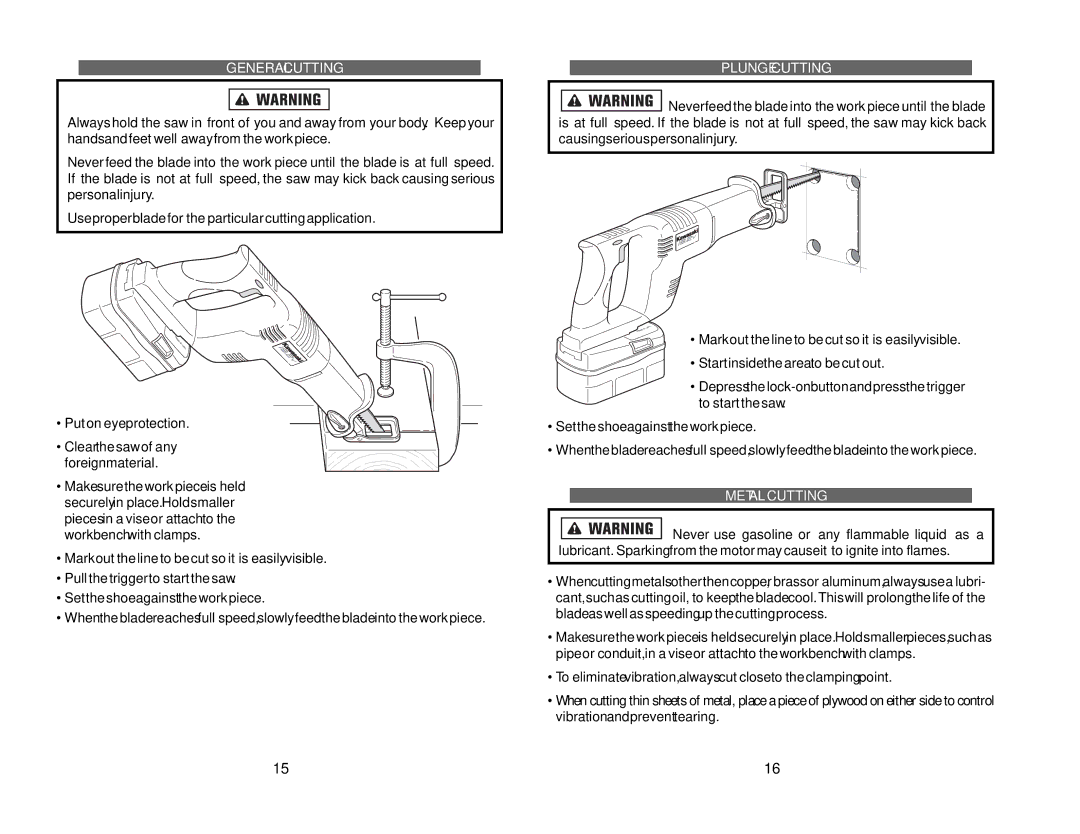
GENERAL CUTTING
Always hold the saw in front of you and away from your body. Keep your hands and feet well away from the work piece.
Never feed the blade into the work piece until the blade is at full speed. If the blade is not at full speed, the saw may kick back causing serious personal injury.
Use proper blade for the particular cutting application.
• Put on eye protection.
•Clear the saw of any foreign material.
•Make sure the work piece is held securely in place. Hold smaller pieces in a vise or attach to the workbench with clamps.
•Mark out the line to be cut so it is easily visible.
•Pull the trigger to start the saw.
•Set the shoe against the work piece.
•When the blade reaches full speed, slowly feed the blade into the work piece.
PLUNGE CUTTING
![]() Never feed the blade into the work piece until the blade is at full speed. If the blade is not at full speed, the saw may kick back causing serious personal injury.
Never feed the blade into the work piece until the blade is at full speed. If the blade is not at full speed, the saw may kick back causing serious personal injury.
• Mark out the line to be cut so it is easily visible.
• Start inside the area to be cut out.
• Depress the
•Set the shoe against the work piece.
•When the blade reaches full speed, slowly feed the blade into the work piece.
METAL CUTTING
![]()
![]()
![]()
![]()
![]()
![]()
![]() Never use gasoline or any flammable liquid as a lubricant. Sparking from the motor may cause it to ignite into flames.
Never use gasoline or any flammable liquid as a lubricant. Sparking from the motor may cause it to ignite into flames.
•When cutting metals other then copper, brass or aluminum, always use a lubri- cant, such as cutting oil, to keep the blade cool. This will prolong the life of the blade as well as speeding up the cutting process.
•Make sure the work piece is held securely in place. Hold smaller pieces, such as pipe or conduit, in a vise or attach to the workbench with clamps.
•To eliminate vibration, always cut close to the clamping point.
•When cutting thin sheets of metal, place a piece of plywood on either side to control vibration and prevent tearing.
15 | 16 |
